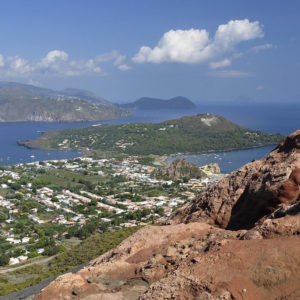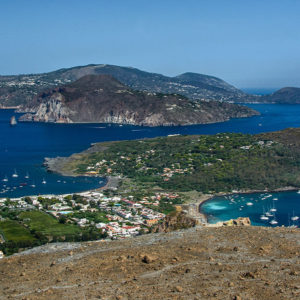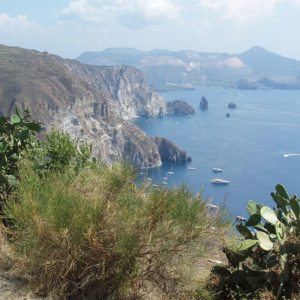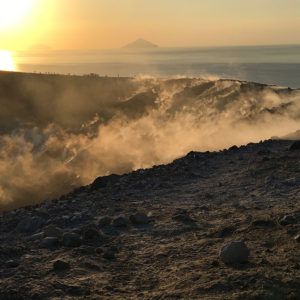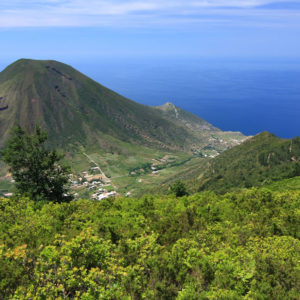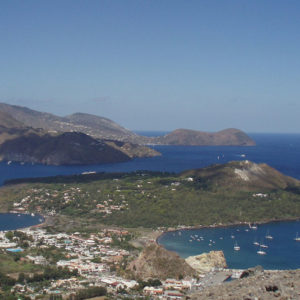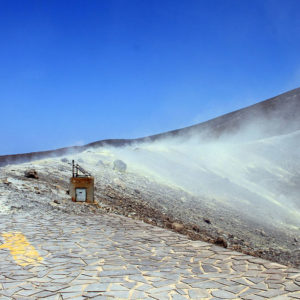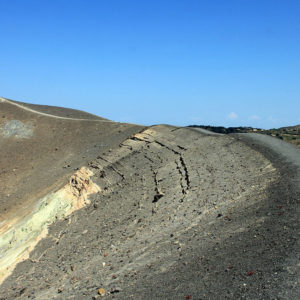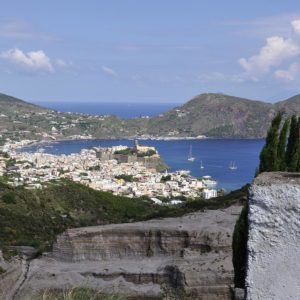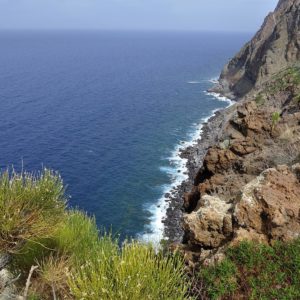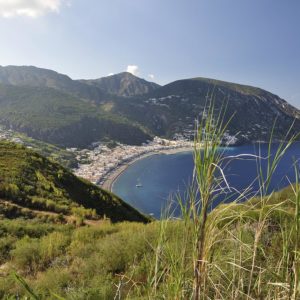Aeolian Islands
The Aeolian Islands, all seven of volcanic origin but all very different from each other,
are popular both as a destination for day trips from the mainland, or as an option for longer stays.
The beauty of these islands allows one to be transported into a world of wide sky, clear sea waters and impressive volcanic scenery. Also of interest is the archaeological evidence found here.
Lipari, the largest of the islands and the location of the capital, has much to offer. The cathedral, dedicated to S. Bartolomeo, the archaeological museum, and excavations from the past. The best vantage points are located inside the citadel. Below the fortifications, the old town spreads down to two ports .
But only an island tour can bring the particularities of Lipari to light: the four small villages, the views of the other islands, the former pumice quarries, and the Obsidian outcropping .
Vulcano comprises three craters, one of which is still active. It is said to be the home of Aeolus, the god of the winds. On the eastern shore of the island are sulfur vapors and muddy mineral springs (mud baths), a good remedy for arthritis, rheumatism and circulatory disorders. Particularly recommendable is an island tour by boat, or a swim at the black lava sand beach!
Panarea is the smallest of the Aeolian Islands, and its waters are excellent for underwater excursions. The only town is San Pietro with a small harbor. In the south, on the projection of Cape Milazzese are the remains of a Bronze Age village (14/13 century BC).
Stromboli is known for its active volcanic activity and is characterized by a steep rocky coast with small beaches. Along the “Sciara del Fuoco “, the volcano offers spectacles like fireworks, which often end up in the sea.
Salina is the second largest and greenest island of the archipelago with mature woodland and wine regions, where the famous Malvasia is grown. It is also known for its excellent capers .
Filicudi offers peculiar forms of basalt prisms, steep slopes and marine terraces. At Cape Graziano one will find the foundations of the circular buildings of a prehistoric village (18/17 century BC).
Alicudi is a steep rocky cone in the sea, an island for adventurers who like to eat lobster!

